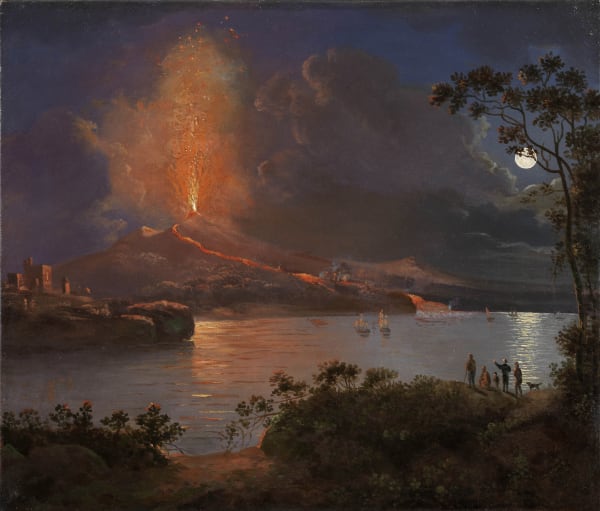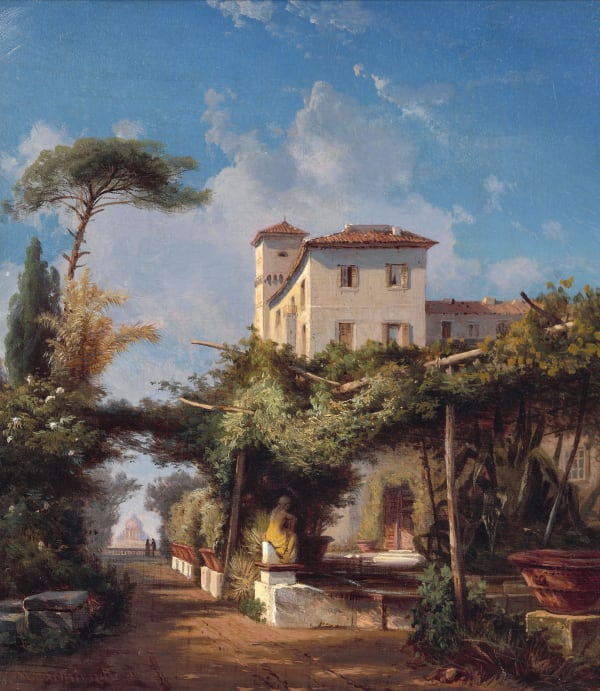
ANTON SMINCK PITLOO ARNHEM 1790- NAPLES 1837
SOLD
Pitloo began his apprenticeship in his native Arnhem, where he grew up, and then received a scholarship from the then King of Holland, Louis Bonaparte, which allowed him to go to Paris where he first studied with the architect and designer Charles Percier and then, due to his interest in landscape painting, at the ateliers of Jean-Joseph-Xavier Bidauld (1758-1846) and Jean-Victor Bertin (1767-1842) who also taught Jean-Baptiste-Camille Corot.
In 1811, Pitloo moved to Rome, still supported by Luigi Bonaparte as well as by commissions received from British nobles. Three years later, with the fall of Napoleon, he went to Naples at the invitation of the Russian diplomat Count Gregorio Vladimir Orloff, where he remained until his untimely death during the 1837 cholera epidemic. In 1816, through a public competition, he was awarded the Chair of Professor of Landscape Painting at the Academy of Painting. Married to the Neapolitan Giulia Mori, he became a citizen of the Kingdom of the Two Sicilies.
It was during his stay in Naples that he added a second “o” to his surname probably to underline his foreign origins. Here, in 1820 he founded a private school of painting, the so-called “Scuola di Posillipo”, a group of Neapolitan landscape painters who followed his approach to landscape painting en plein air, based on observation of the natural effects of light and weather.
In both Naples and Rome, Pitloo produced paintings characterized by remarkable freshness and vivacity, in which he provided a very personal interpretation of the blossoming Romantic taste. Influenced by Turner’s and Corot’s travels to Italy, Pitloo’s paintings can be counted among the early nineteenth-century “adventures” in non-academic painting, an affinity particularly evident in the painting presented here.
Here Pitloo gives evidence of his absolute mastery of colour. The focus of this work lies in capturing the range of colours of the evening sky – the reflections of the setting sun are expressed in the pink tones of the thin horizontal clouds, while the landscape in the background appears as a purplish mass. On the right, the artist’s brush has sketched the figure of a shepherdess with a few adept strokes. The bright red of a strip of fabric that attracts the observer’s eye to the figure expresses all of the painter’s artistic flair.
Join the mailing list
Subscribe to our newsletter to receive all the news about exhibitions, fairs and new acquisitions!

